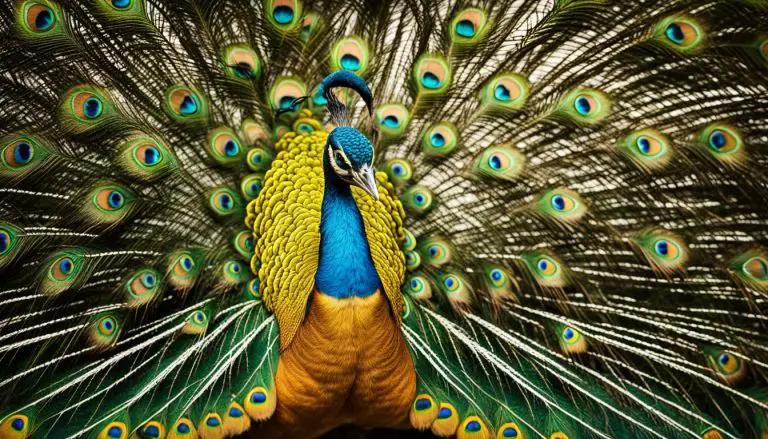Imagine a world alive with birdsong, where nests cradle hidden gems—eggs, like tiny treasures waiting to be discovered. As an ardent birdwatcher and researcher, I’ve dedicated countless mornings to the quiet thrill of observing these winged marvels, piecing together the mysteries of their life cycles and conduct.
The ritual of egg-laying is as timeless as it is captivating; still, many who share my passion grapple with understanding its frequency in the wild.
The reproductive patterns of birds showcase remarkable diversity. Some feathered friends grace us with new generations throughout the year; for others, breeding is an episodic event dictated by nature’s steady tempo.
My adventures into this realm have revealed intricate dances timed to environmental cues that signal when it’s time for these creatures to introduce new life under their fragile wings.
In this article, we’ll embark on an enthralling voyage from the moment of ovulation until hatchlings break free from their shells—a narrative arc sure to add depth to your own birding exploits.
Let yourself be captivated by what unfolds!
Key Takeaways
- Birds lay eggs at different times based on their type, where they live, and the season. For example, chickens lay eggs all year, but wild birds usually lay once a year in spring.
- Only female birds can lay eggs, and most of the time it is not painful for them. Sometimes a bird can lay an egg without a male, but this does not happen often.
- The health of the bird matters when it comes to how often they lay eggs. Healthy birds with good food might lay more eggs than sick or hungry ones.
- Things like weather and daylight change when and how many times birds have babies. Warmer weather with long days can make birds want to start laying eggs sooner.
- Some birds can have baby chicks more than one time in a year if there is enough food and it’s safe from bad weather or other dangers.
The Egg-Laying Process for Birds
Birds typically lay eggs as part of their reproductive cycle. This process is mainly carried out by female birds, who will find a suitable nesting spot to lay their eggs. The frequency and timing of egg laying can be influenced by various factors such as nesting behaviors, environmental conditions, and the health of the bird.
When do birds lay eggs?
Birds usually lay eggs once a year, but this can change with different kinds. Some species might lay eggs more than one time in a year. It often depends on the time of year and where they live.
In spring, lots of birds start laying eggs because the weather gets better and food is easier to find.
Domestic birds like chickens and ducks may lay eggs all through the year. Wild birds follow their own patterns, which are ruled by nature’s rules like light, temperature, and seasons.
They have special times when they build nests, find mates, and get ready for new baby birds. The whole thing about laying eggs is really tied to making sure their little ones will survive and grow up strong.
Do all birds lay eggs?
Birds’ egg-laying behavior differs among species. Not all birds lay eggs, especially male ones. Domesticated birds like chickens and ducks tend to lay eggs frequently, while wild birds typically lay eggs only once a year.
Factors such as their environment, breeding habits, and nesting cycle play a crucial role in determining how often they lay eggs. Various bird species have different reproductive cycles influencing the frequency of egg laying.
Do male birds lay eggs?
Male birds do not lay eggs. Only female birds have the ability to produce and lay eggs as part of their reproductive process. This is a fundamental aspect of avian biology, where the female bird’s body contains the necessary reproductive organs for egg production and laying.
In most bird species, including domesticated ones like chickens and ducks, male birds do not play a role in egg-laying; instead, they contribute to fertilization through mating with the female bird.
Is laying eggs painful for birds?
Understanding the egg-laying process is essential to know if laying eggs is painful for birds. While male birds do not lay eggs, the ovulation and laying process in females vary across species.
It’s important to note that birds have a single oviduct, which means that all reproductive functions take place in this one organ. When female birds are ready to lay an egg, it moves from their ovary down the oviduct where it gets coated with membranes and shell materials before being laid.
The egg-laying process itself is not typically painful for most bird species as they have adapted mechanisms to facilitate this natural function without experiencing pain. The entire process of forming and laying an egg occurs smoothly due to specialized anatomical structures unique to avian reproduction biology, evolved over millions of years.
Can birds lay eggs without a male?
Birds can lay eggs without a male through a process called parthenogenesis, where an unfertilized egg develops into an embryo. This is observed in some bird species such as turkeys, quails, and some waterfowl.
However, it’s important to note that not all female birds have the ability to reproduce without a male, and this occurrence is relatively rare in the avian world. Environmental factors and genetic predisposition may play a role in enabling female birds to lay eggs without mating with a male.
Factors Affecting Egg-Laying Frequency
The frequency of egg-laying in birds is influenced by various factors, such as nesting behaviors and stages, environmental conditions, the health of the bird, species-specific traits, and mating and courtship behaviors.
Understanding these factors can provide valuable insight into the reproductive patterns of different avian species.
Nesting behaviors and stages
Birds have different nesting behaviors and stages that impact their egg-laying frequency. These behaviors include finding a suitable nest site, building the nest, laying eggs, and caring for the eggs.
Environmental factors such as temperature, food availability, and predation risk also influence nesting behaviors. Additionally, the health of the bird plays a crucial role in successful egg-laying and incubation.
I will provide some insight into how various species of birds exhibit unique nesting behaviors based on their environmental conditions and territorial preferences. Understanding these behaviors can help us appreciate the diversity in avian reproduction cycles and enhance our birding experiences.
Environmental factors
Environmental factors play a significant role in influencing the egg-laying frequency of birds. Factors such as temperature, food availability, and habitat quality can impact when and how often birds lay eggs.
For example, a warmer climate might trigger birds to lay eggs earlier than usual, while changes in food supply may affect their ability to produce eggs. Additionally, disruptions in their natural habitat due to human activities or environmental changes can also affect the timing and frequency of egg production in birds.
Birds adjust their nesting behaviors based on environmental cues like daylight length and temperature variations. These adjustments help them time their breeding cycles to ensure the best chances for successful hatching and chick rearing.
Health of the bird
The health of the bird is crucial when it comes to egg-laying frequency. Birds in good health typically have a higher tendency to lay eggs more frequently. Factors such as nutrition, disease, and stress can significantly impact a bird’s reproductive capabilities.
For instance, malnourished birds may not ovulate or lay eggs regularly. Similarly, diseases like avian malaria can affect fertility and lead to reduced egg-laying frequency in birds.
Additionally, stress due to predators or environmental changes can also disrupt the normal ovulation cycle and decrease the number of eggs laid by birds.
Species of bird
Different bird species have different egg-laying frequencies. For instance, wild birds typically lay eggs once a year. Some birds, like the American Robin, may have multiple nests during a single breeding season.
Captive or domesticated birds, such as chickens and ducks, have been known to lay eggs all year round. The timing of egg laying can vary depending on the species and environmental conditions.
Factors such as nesting behaviors, mating and courtship rituals, and health play significant roles in determining how often different bird species lay eggs.
Mating and courtship
Mating and courtship in birds play a crucial role in the egg-laying process. The male birds often engage in elaborate displays, such as singing or dancing, to attract a mate. Once they have paired up, the mating usually occurs through cloacal contact when the male transfers sperm to the female.
This fertilization process precedes egg laying, which is an essential part of reproduction for many bird species.
During courtship behavior, birds exhibit various rituals and behaviors to signal their readiness to breed. These can include intricate dances, vocalizations, or nest-building activities that showcase their suitability as potential partners.
How Often Do Birds Lay Eggs?
Birds lay eggs at different frequencies depending on factors such as species, seasons, and environmental conditions. Understanding the patterns of egg-laying can provide valuable insights into the reproductive behaviors of birds.
Average frequency
Birds vary in their egg-laying frequency. Some birds lay eggs once a year, while others may lay eggs multiple times in a breeding season. It depends on the species and environmental conditions like climate and food availability.
For example, domesticated birds like chickens can lay eggs all year round, but wild birds follow more seasonal patterns of egg laying based on factors such as mating and courtship behaviors, health status, nest quality, and territory size.
The timing of egg laying is crucial too – some birds can start nesting within 24 hours after ovulation while others take longer. Additionally, certain bird species are known to have late nesting habits or produce multiple broods during one breeding season.
These diverse characteristics make the average frequency of bird egg laying quite dynamic across different bird species.
Seasons and climate
Seasons and climate significantly impact the egg-laying frequency of birds. Warmer weather, especially during spring, tends to stimulate birds to lay eggs. The longer daylight hours provide more time for feeding and caring for the young hatchlings.
Additionally, milder temperatures increase the chances of survival for eggs and young chicks. Conversely, in colder climates or during harsh winter conditions, many bird species may hold off on laying eggs until conditions improve.
Environmental changes also influence when birds lay eggs. For instance, migratory birds time their egg-laying to coincide with the peak availability of food sources in their breeding areas.
Late nesting birds
Late nesting birds, such as the American Robin and Mourning Dove, lay their eggs after many other bird species. These birds typically wait until later in spring or even early summer to build their nests and lay eggs.
Late nesting can be advantageous because it allows these birds to take advantage of an abundance of food and suitable nesting sites that may not have been available earlier in the season.
The late timing also gives these birds a chance to avoid harsh weather conditions that early nesting birds may encounter. This delay can lead to a higher survival rate for both the parents and chicks, as food sources are more plentiful, and there’s less risk of extreme weather impacting the nest.
Multiple broods
Some birds can have more than one set of eggs in a breeding season. This means they can lay eggs, raise their chicks, and then start all over again. It’s fascinating to see how some bird species manage to fit multiple generations into a single nesting season.
Factors like food availability, climate, and the success of previous broods can influence whether birds will attempt to raise another set of chicks in the same year. Understanding this behavior adds depth to birdwatching as we witness the incredible strategies that avian parents employ for ensuring the survival of their offspring.
Bird nesting schedules and behavior are influenced by several factors which impacts their decision-making about having multiple broods within the same breeding season. This exciting phenomenon demonstrates the amazing adaptability and resilience of these feathered creatures as they navigate through various challenges to ensure future generations.
Conclusion
In conclusion, the egg-laying frequency of birds varies widely depending on species, environmental factors, and nesting behaviors. Wild birds typically lay eggs once a year while domesticated birds may lay eggs more frequently.
Factors such as age, territory size, and time of year also play crucial roles in determining how often birds lay eggs. Understanding these factors helps birders appreciate the diverse reproductive cycles found in avian species.
By considering these aspects, we can gain valuable insights into the breeding habits and reproductive behaviors of our feathered friends.
I’m Owen Featherstone, your bird-watching buddy and enthusiast of all things feathered! Armed with binoculars and a notebook, I’m on a never-ending quest to uncover the mysteries of our avian friends. Whether it’s deciphering melodies in a dawn chorus or finding out if hummingbirds ever take coffee breaks, I’m here to share the delightful world of birds with you. So grab your virtual wings, and let’s explore the skies together!




